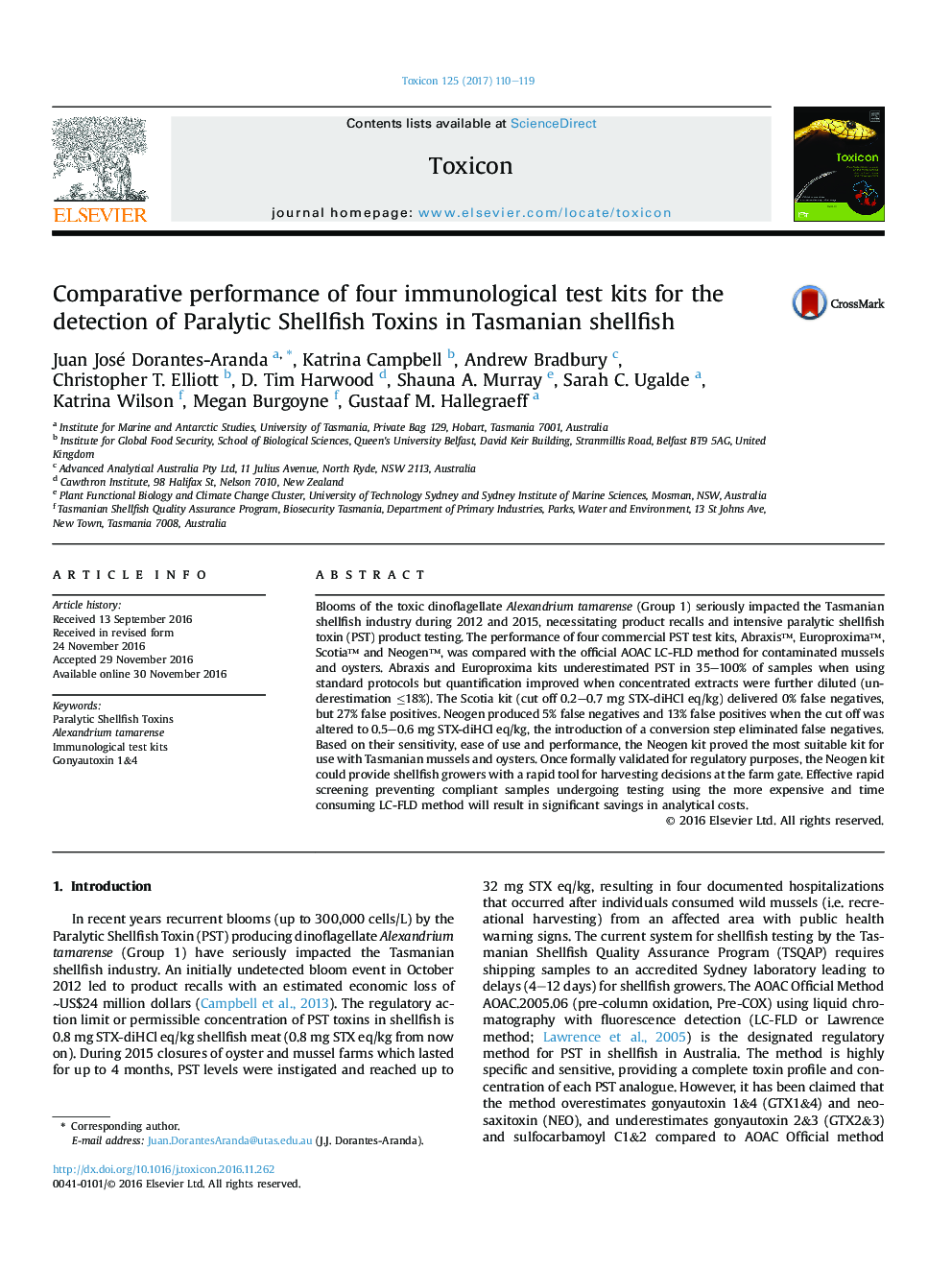| کد مقاله | کد نشریه | سال انتشار | مقاله انگلیسی | نسخه تمام متن |
|---|---|---|---|---|
| 5519428 | 1544111 | 2017 | 10 صفحه PDF | دانلود رایگان |
- Two quantitative and two qualitative kits were assessed for PST detection in Tasmanian shellfish.
- Quantitative PST test kits showed poor performance and underestimated toxin concentrations.
- The qualitative Neogen⢠kit proved to be the best tool for PST detection in Tasmanian shellfish.
- A conversion step was introduced to increase the reactivity of the Neogen kit.
Blooms of the toxic dinoflagellate Alexandrium tamarense (Group 1) seriously impacted the Tasmanian shellfish industry during 2012 and 2015, necessitating product recalls and intensive paralytic shellfish toxin (PST) product testing. The performance of four commercial PST test kits, Abraxisâ¢, Europroximaâ¢, Scotia⢠and Neogenâ¢, was compared with the official AOAC LC-FLD method for contaminated mussels and oysters. Abraxis and Europroxima kits underestimated PST in 35-100% of samples when using standard protocols but quantification improved when concentrated extracts were further diluted (underestimation â¤18%). The Scotia kit (cut off 0.2-0.7 mg STX-diHCl eq/kg) delivered 0% false negatives, but 27% false positives. Neogen produced 5% false negatives and 13% false positives when the cut off was altered to 0.5-0.6 mg STX-diHCl eq/kg, the introduction of a conversion step eliminated false negatives. Based on their sensitivity, ease of use and performance, the Neogen kit proved the most suitable kit for use with Tasmanian mussels and oysters. Once formally validated for regulatory purposes, the Neogen kit could provide shellfish growers with a rapid tool for harvesting decisions at the farm gate. Effective rapid screening preventing compliant samples undergoing testing using the more expensive and time consuming LC-FLD method will result in significant savings in analytical costs.
Journal: Toxicon - Volume 125, January 2017, Pages 110-119
